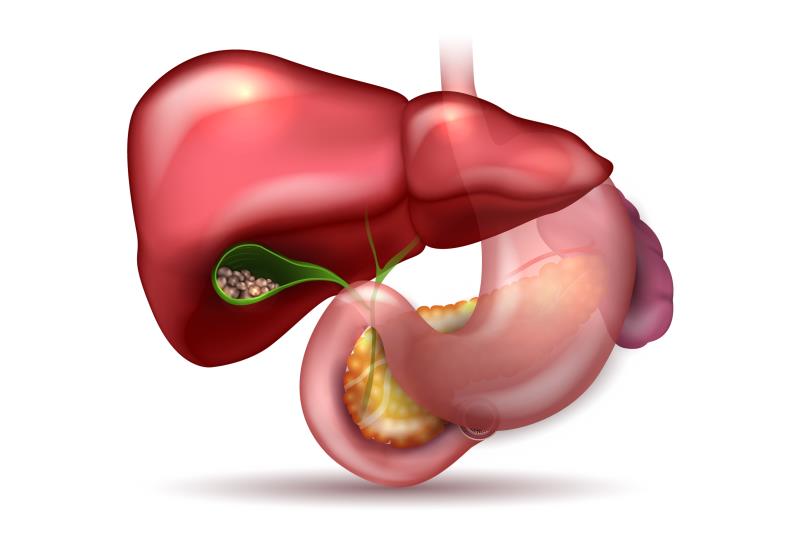
The combination of gemcitabine plus S-1 (GS) is as good as gemcitabine plus cisplatin (GC), the current standard treatment for advanced biliary tract cancer (BTC), according to data from the phase III FUGA-BT trial (JCOG1113). However, the former does not require concomitant hydration therapy and should be considered a new treatment option for patients with advanced or recurrent BTC.
“Our study is the first to provide positive results for BTC since the ABC-02 trial. [The results demonstrate] GS to be noninferior to GC and revealed additional benefits in measures such as overall survival (OS), progression-free survival (PFS) and clinically significant adverse events (AEs),” the investigators said.
FUGA-BT randomized 354 patients to receive either GS (n=179) or GC (n=175). There was no significant between-group difference observed in the primary endpoint of OS (median, 15.1 vs 13.4 months, respectively; hazard ratio [HR], 0.945, 90 percent CI, 0.78–1.15; p=0.046 for noninferiority). [Ann Oncol 2019;doi:10.1093/annonc/mdz402]
Results for the secondary outcomes were similar. Specifically, the median PFS was 6.8 months with GS vs 5.8 months with GC (HR, 0.86, 0.70–1.07), while the response rates were 29.8 percent and 32.4 percent, respectively.
Both treatment regimens were generally well-tolerated. Clinically significant AEs were relatively fewer in the GS arm (29.9 percent vs 35.1 percent). Higher grade anaemia and thrombocytopaenia, as well as all-grade peripheral sensory neuropathy, were more common in GC. On the other hand, higher grade and all-grade oral mucositis and rash maculopapular, as well as all-grade diarrhoea and skin hyperpigmentation, occurred more frequently in GS.
“Considering the above, GS may be more appropriate for certain patients, such as those with low haemoglobin/platelet count levels, those with peripheral sensory neuropathy, those not amenable to time-consuming drip infusions, and those with locally advanced cancer,” the investigators noted.
“Conversely, patients with poor oral medication management, as well as those fearing GS-related AEs such as oral mucositis and rash maculopapular, diarrhoea, and skin hyperpigmentation, should proactively select for GC,” they added.
Patients in the GC arm received gemcitabine (1,000 mg/m2) and cisplatin (25 mg/m2) infusion on days 1 and 8 every 3 weeks. Those in the GS arm, on the other hand, gemcitabine (1,000 mg/m2) infusion on days 1 and 8. S-1 was administered orally twice daily (60 mg/day for a body surface area [BSA] <1.25 m2, 80 mg/day for a BSA between 1.25 and 1.50 m2, and 100 mg/day for a BSA ≥1.50 m2).
“In ABC-02, GC therapy was repeated for up to 24 weeks and treatment was discontinued. In [the current] study, after 16 administrations (equivalent of 24 weeks), cisplatin was discontinued, but gemcitabine monotherapy was continued,” the investigators explained. [N Engl J Med 2010;362:1273-1281]
“The median PFS of GC was shorter than that of ABC-02. Tumour response was assessed every 12 weeks in ABC-02, and every 6 weeks in this study, and this discrepancy may have had some effect on PFS,” they added.
The key takeaway from FUGA-BT is that GS can be considered a new standard treatment option, according to the investigators. “However, rather than replacing GC, patients can view GS as an additional option, because both regimens had more suitable situations than each other.”